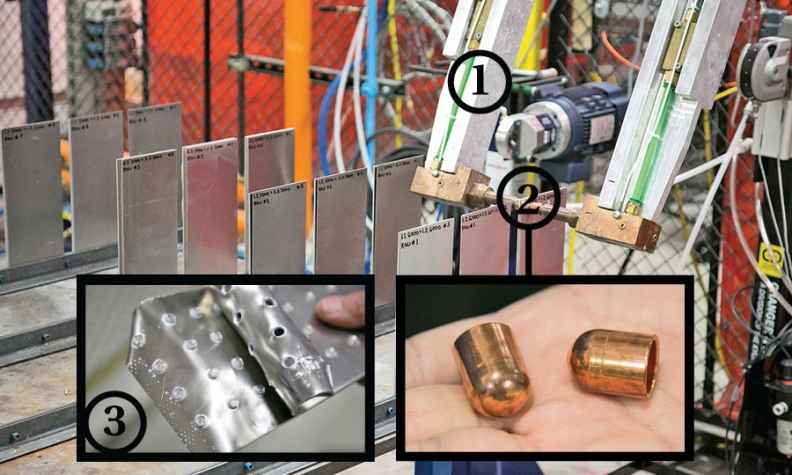DETROIT -- General Motors is adding more lightweight aluminum to its vehicles. But unlike Ford Motor Co., GM is not spending hundreds of millions of dollars to retool its assembly plants for the metal.

Instead of joining aluminum parts with rivets and industrial adhesive -- as Ford does to assemble the redesigned 2015 F-150 -- GM is rolling out a new welding system.
GM's system spot welds aluminum sheet, such as doors, hoods and tailgates, on existing production lines with the same robots and welding guns used for steel.
Ford, on the other hand, spent $359 million and lost 10 weeks of production this fall when it converted its Dearborn, Mich., F-150 plant from steel to aluminum for the 2015 model. Early next year, Ford plans to make the same expensive switch at its Kansas City, Mo., truck plant.
Richard Schultz, managing director of Ducker Worldwide, a consulting firm in suburban Detroit, says GM's aluminum welding system is a breakthrough in manufacturing technology.
"It is a great leap. And I think that is very important. I don't know of anyone else who has that," he said. "GM will not have to spend $359 million to retool a plant if they decide to do an aluminum Silverado."
GM has not committed to producing an aluminum-bodied vehicle. But reducing weight with more aluminum is a high priority, said Mark Reuss, GM's global product chief.
"We can no longer bring out new vehicles that weigh the same or more as the competition. We have to be the best in the world at how we do vehicle design," said Reuss.
The new alumi-num spot welding system, which GM internally calls multiring domed electrode, is used at GM's Grand River plant in Lansing, Mich., to weld the aluminum doors on the 2015 Cadillac CTS.
It also is used in Arlington, Texas, on the aluminum liftgates of the Chevrolet Tahoe and Suburban, GMC Yukon and Yukon XL, and Cadillac Escalade and Escalade ESV. GM also uses the system in Bowling Green, Ky., to weld the aluminum underbody of the Chevrolet Corvette.
GM can quickly and inexpensively roll out the welding system to its assembly plants, Reuss said.
Only minor changes are required to production equipment. Liquid cooling lines must be installed to keep special copper welding tips at the proper temperature.
A machine that resurfaces the copper welding tips also is required.
And the production line robots need an additional transformer to handle the higher voltage required to weld aluminum sheets.
"Our view is we want to be able to reuse our existing infrastructure. We don't want to have to retool," said Blair Carlson, GM's manufacturing systems research lab group manager.
During a demonstration this month at GM's Tech Center in Warren, Mich., officials showed a visitor a standard Fanuc production line robot that quickly and quietly zipped through 48 welds on a series of aluminum sheets. Each weld took about a second.
The robot's arm holds pincers with copper caps. The pincers gently squeeze the two aluminum sheets together, making a sound like the soft clicking of castanets.
